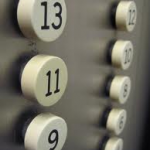Investors with any experience at all can recite the long-term results: the U.S. stock market has averaged about 9-10% total returns over the last 30 years and about 6% the last 15 years. The bond market has averaged about 5%. In truth, the average stock market investor has gained only about 3.5%, on average over the last 15 years, and the average bond investor only 3.8%. The lower investor returns are due to the inability of people to stay in the markets during turbulent time periods, when they cash out near market lows and then miss out on corresponding gains. All kinds of studies have shown that staying invested pays off, but when risk becomes reality, investors become their own worst enemies, seemingly embracing the “sell low, buy high” concept they are trying to avoid. Bond investors have realized gains that are almost 25% lower than average, for the very same reasons.
This topic is surely worthy of a long discussion, but there is another, darker aspect of this investor tendency that has even worse long-term implications. There are a number of very intelligent researchers, analysts, and long-term thinkers, who are suggesting that, going forward, both stock and bond returns will be quite muted. They suggest investors should expect no more than 4-5% for stocks, and that bonds (in a period of rising rates) will barely break even. We all know predictions and estimates are just that. But there are compelling reasons why this could indeed happen.
The 30-year bond bull market, when interest rates on 30-year U.S. Treasuries declined from more than 20% to the current 2.3%, is over. Short-term bonds have been at or near 0% for several years now. Whether it is later this year, or next year, or the year after that, it is pretty clear that the Fed will be pushing rates higher over the next few years. Most bond experts say investors should be happy to net their bond coupons and hope the face values do not decline. That could mean average real returns (net of inflation) in the 0-2% range.
If stocks follow a reversion to the mean, we might see average total returns in the low-to-mid single digits, meaning 4-5%. This would be an average, of course, with riskier asset classes perhaps doing better. And why should we expect overall investor behavior (buy high, sell low) to change? Add this to the mix, and you can quickly have net negative returns.
If these return expectations turn out to be correct, what does this do to retirement planning scenarios that have plugged in annual returns of 6%, 7% or higher? The quick answer is that it will blow many retirement cash flow plans out of the water. Even a half-percent change in long-term planning assumptions can be huge, so you can imagine what would happen to investment portfolios when expected 7% returns are reduced to 4% or even 3%. We have been using 4-5% for years with our clients, but we are now considering using 3-4% as a “what-if” scenario.
Retirement cash flow spending becomes critical, of course. But even more importance might be unloading debt prior to retirement – no ongoing credit card debt, no mortgage debt, and no other outstanding loans. Mortgage payments are likely our biggest monthly expense, with credit card payments a close second. The average household’s debt-to-income ratio is more than 45%. Getting debt paid (or at least lowered) before retirement means much less pressure on the investment portfolio, and could be the difference between running out of money and having money left over when you die.
There are other factors, of course, such as life expectancy (individual and family health history), but we urge clients to use a very conservative number for investment returns, assume inflation at 2-3%, and annual increases for Social Security of 1%. Run the projections with these inputs, and see what you get. Any reduction in cash flow needs will only improve the picture. Do your own “what if”.












